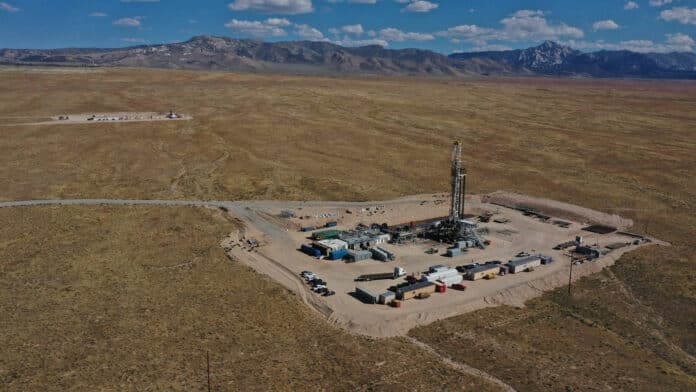Drilling costs constitute a major part of geothermal development capital costs. Many conventional geothermal developments face challenges when it comes to geologic consistency and the scale of operations needed to take advantage of the cost advantages that a drilling learning curve may offer.
Now, the Stanford Geothermal Workshop, Fervo Energy, has published early drilling results from its Cape Station facility in southern Utah.
The results exceeded the Department of Energy’s expectations for enhanced geothermal systems that could lead to a quicker and more widespread uptake of this clean energy production process.
Fervo has been drilling at Cape Station, its 400 MW project in southwest Utah, since June 2023. Over the last six months, they have already drilled one vertical and six horizontal wells, with shorter drilling times from well to well, and learnings have accelerated.
Fervo Energy has announced that it has set a new record by drilling a horizontal well in just 21 days, reducing drilling time by 70% compared to its first horizontal well in Nevada in 2022. This achievement has led to a significant reduction in costs, with drilling costs across the first four horizontal wells at Cape falling from $9.4 million to $4.8 million per well.
The geothermal energy company is using this process to produce affordable, usable, clean power through an enhanced geothermal system (EGS). In 2021, Fervo’s Project Red was able to produce 3.4 megawatts (MW) of power, enough to power 500 US households, and was fully operational in November, connected to the same grid in Nevada to which some of Google’s data centers are linked.
Fervo is planning to launch an even larger project in Utah that is expected to start operating by 2026, and have a capacity of pumping out 400 MW of non-stop power by 2028. This project involves drilling wells that are even hotter and deeper than those from Project Red, and they are able to drill faster.
How does EGS work? The process involves drilling wells to inject water deep inside the ground, breaking up solid rock so that water can circulate through it and get heated. The hot water is then used to heat a working fluid, which turns into steam, powers turbines, and produces electricity. The water is then recirculated, and the process continues again.
Fervo reached the new drilling speeds by increasing both the rate of penetration (ROP) and the life of drill bits. They achieved an average ROP of 70 feet/hour on the fourth horizontal well drilled at Cape.
Modern oil and gas drilling equipment played a crucial role in this performance. Fervo utilized polycrystalline diamond compact (PDC) drill bits commonly used in shale basins to cut through hard granite. They also used mud coolers to counteract high subsurface temperatures that have historically derailed geothermal exploration. These results show how oil and gas technology can be applied to enhance geothermal energy production.
“We now have the best drilling technology from the petroleum drilling industry. What encourages me now is that we’re starting to learn how to use it in ways that specifically maximize performance,” said Fred Dupriest, Professor of Engineering Practice at Texas A&M University and Former Chief Drilling Engineer at ExxonMobil. “Performance isn’t just what you use, but how you use it. We’re not just achieving technology transfer, but an impressive rate of knowledge transfer in how to use it.”
